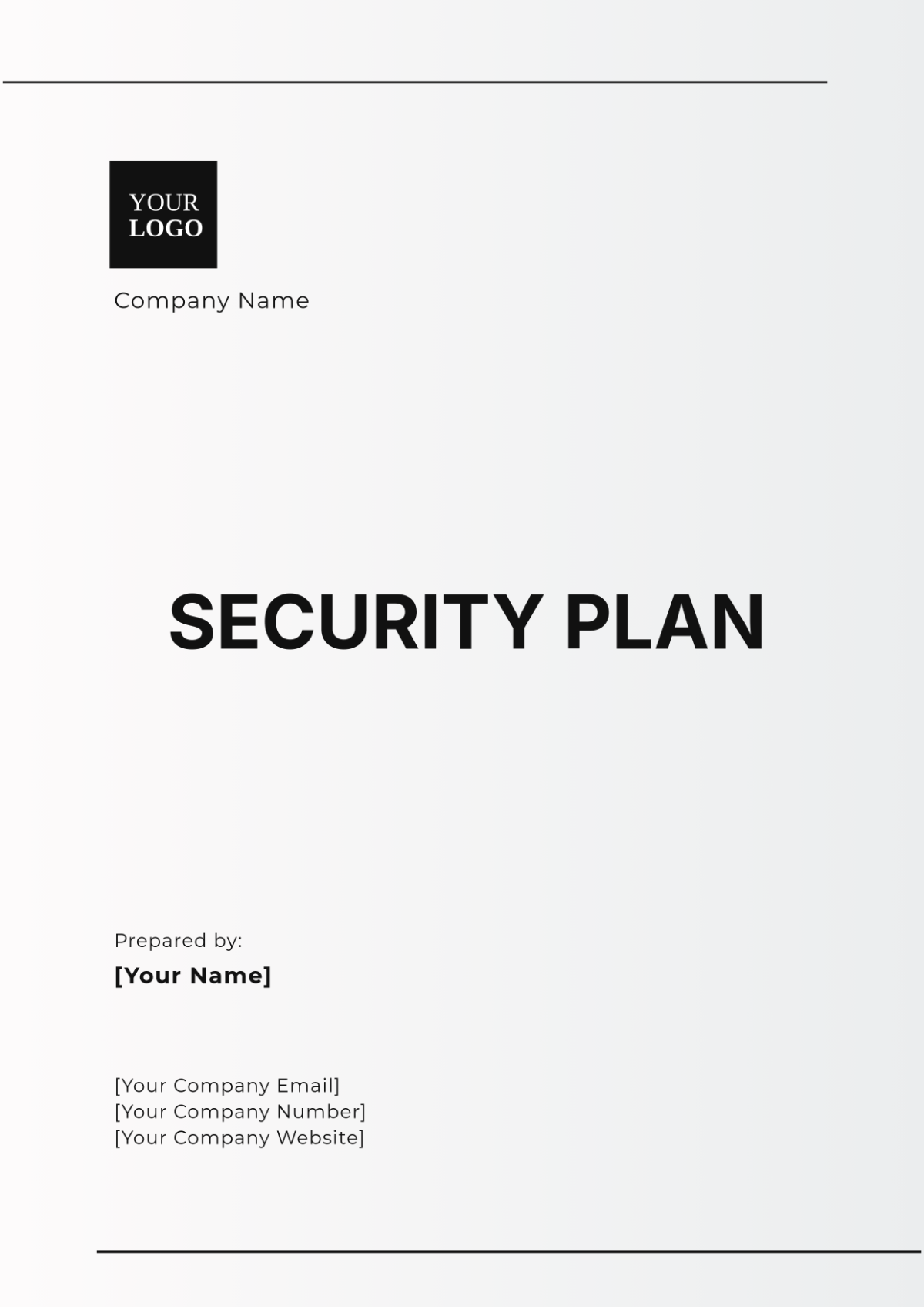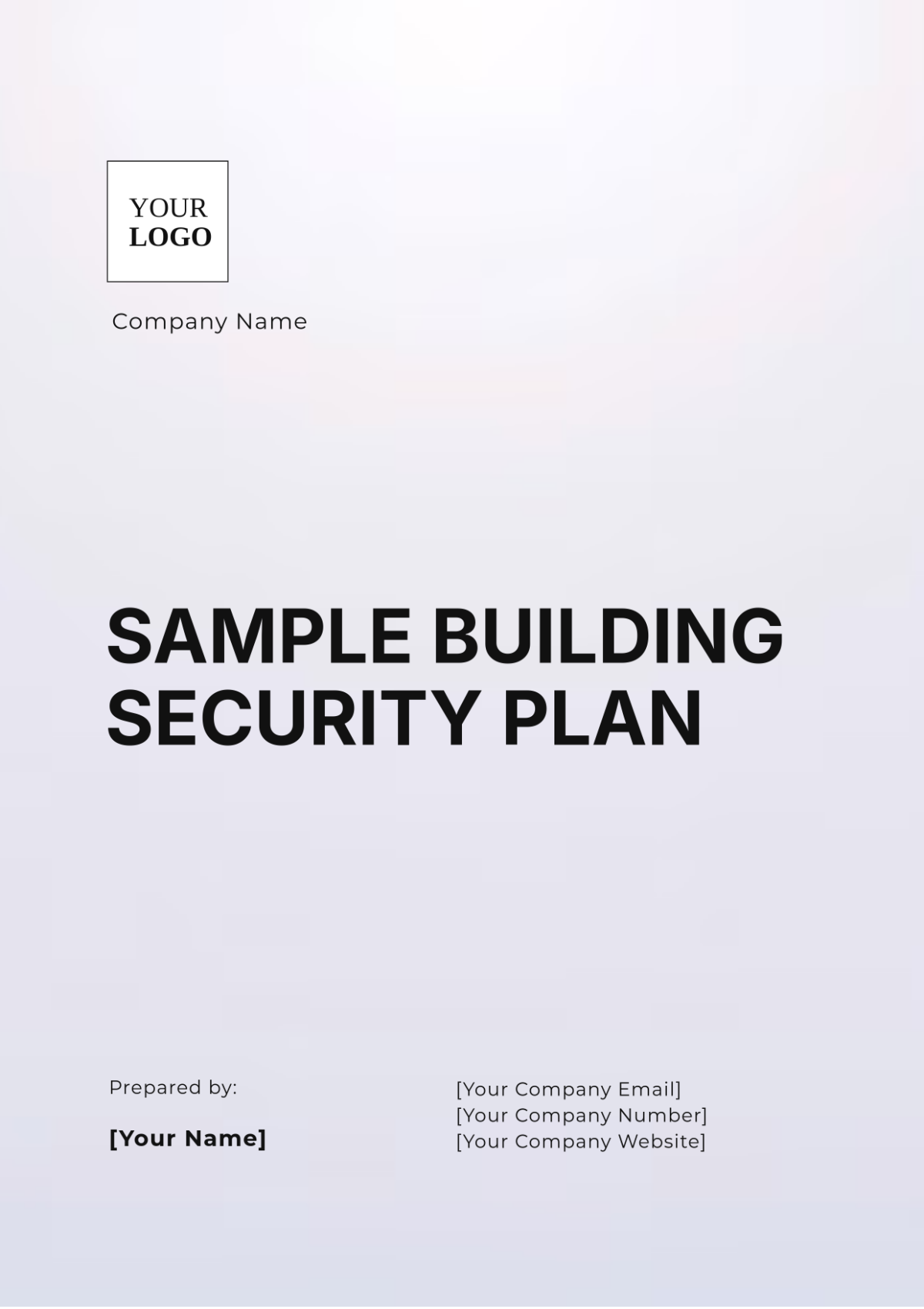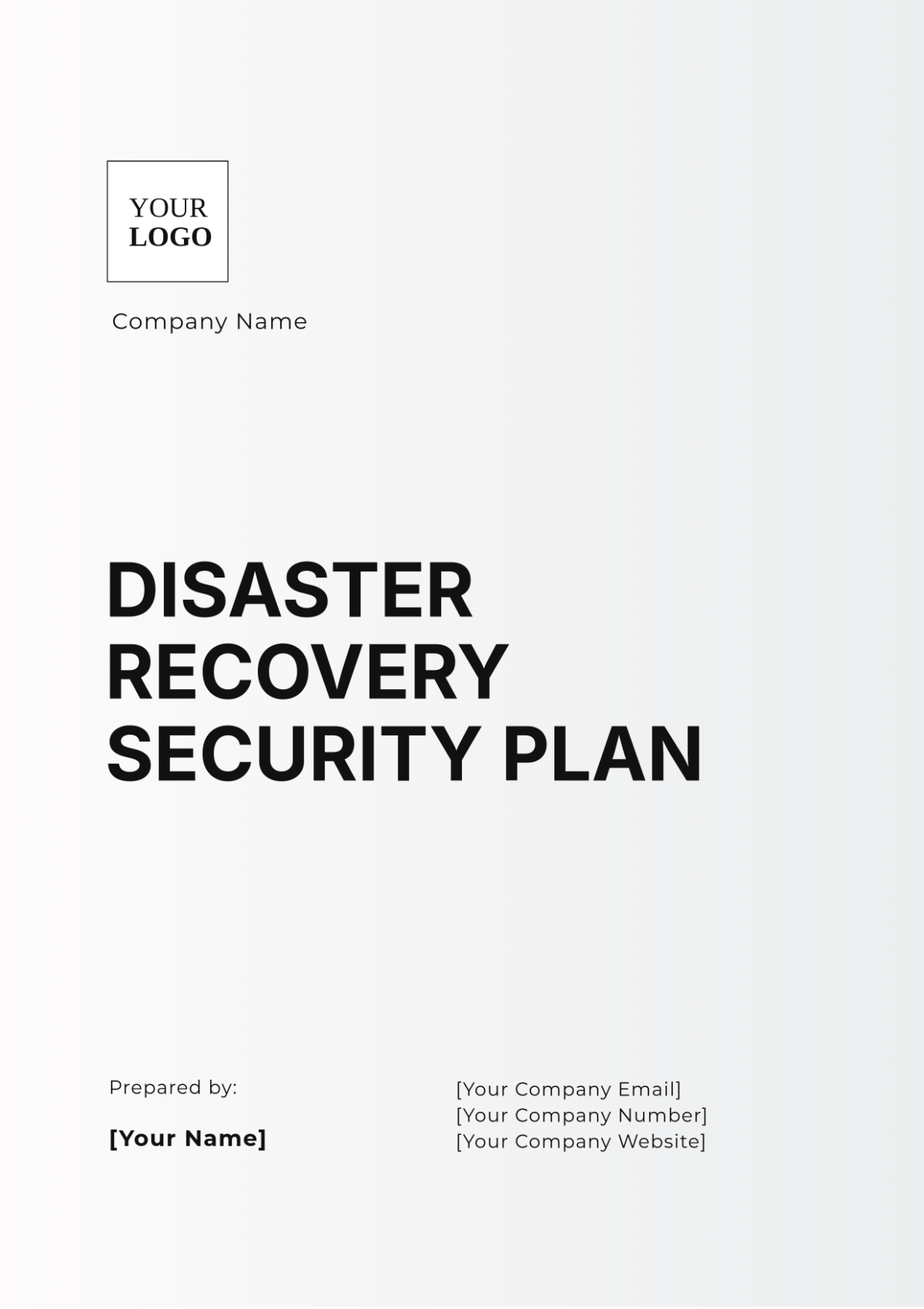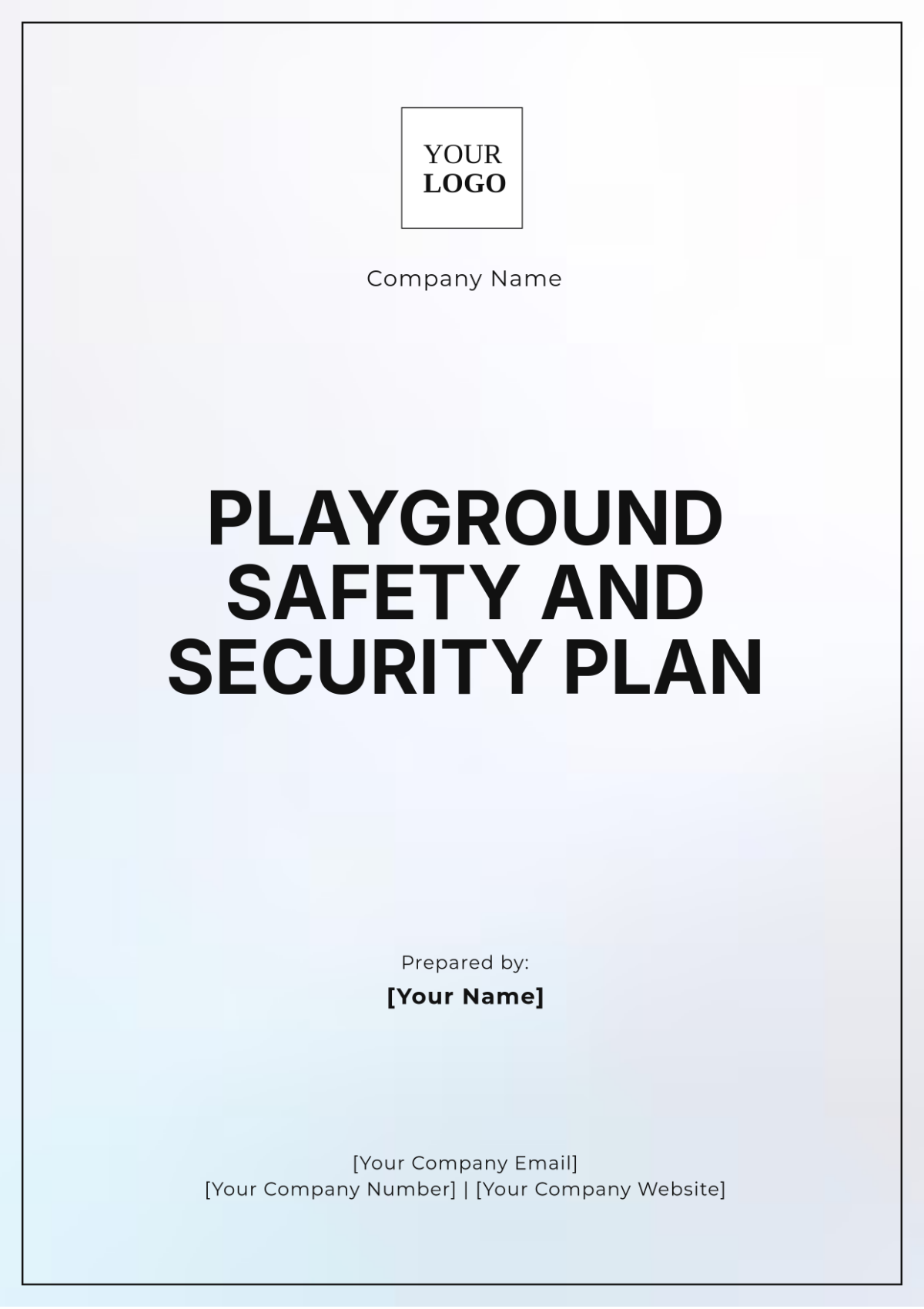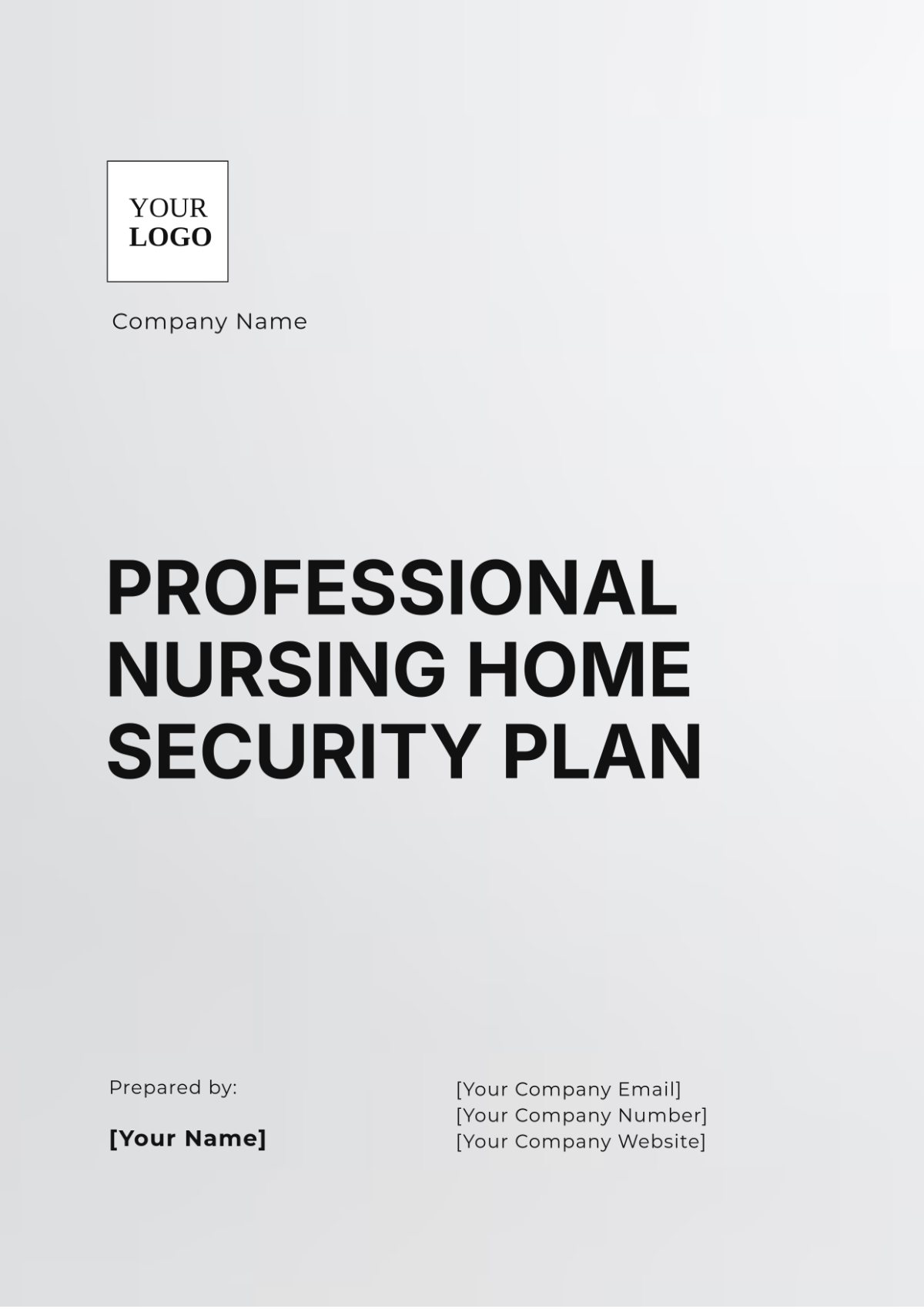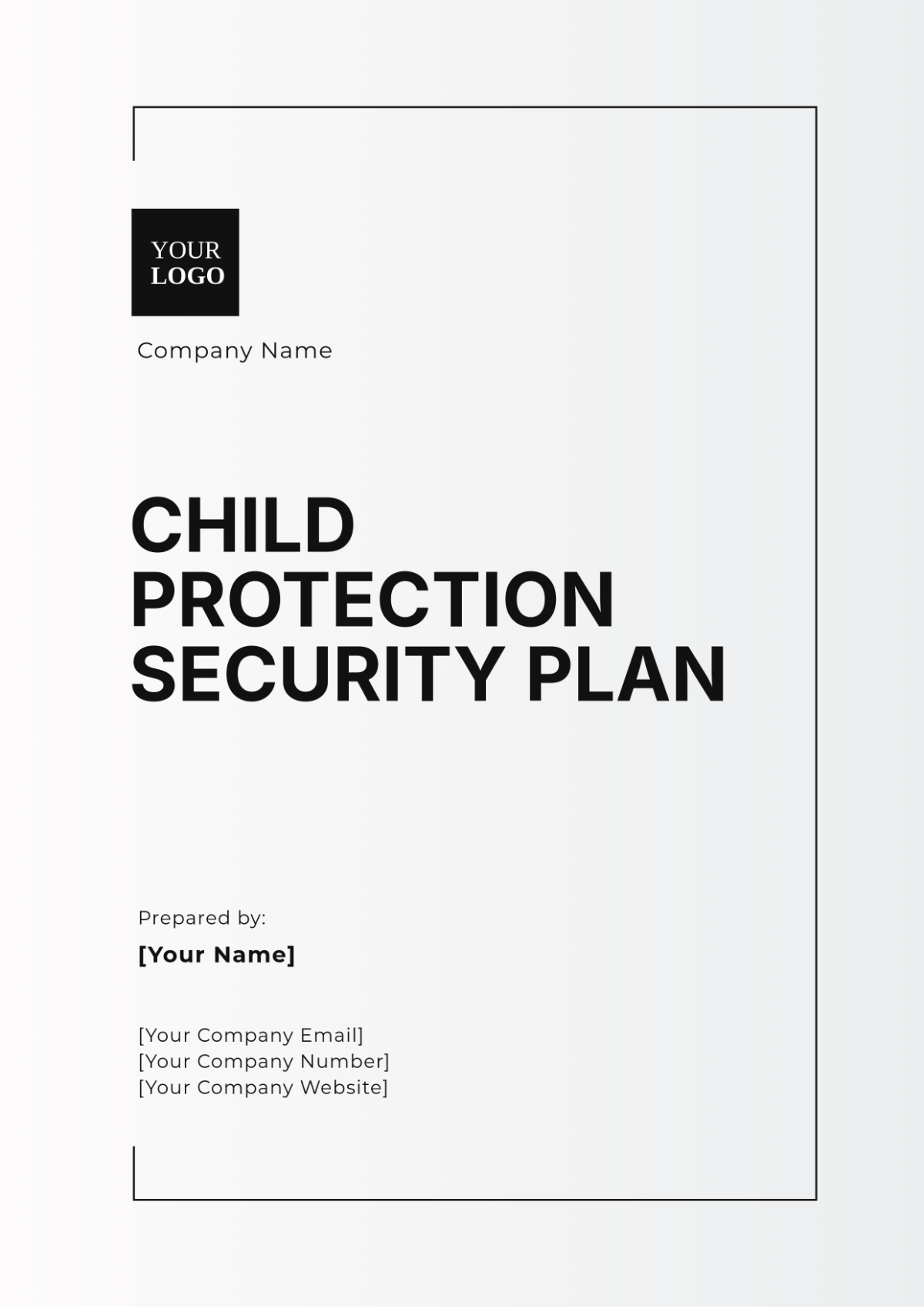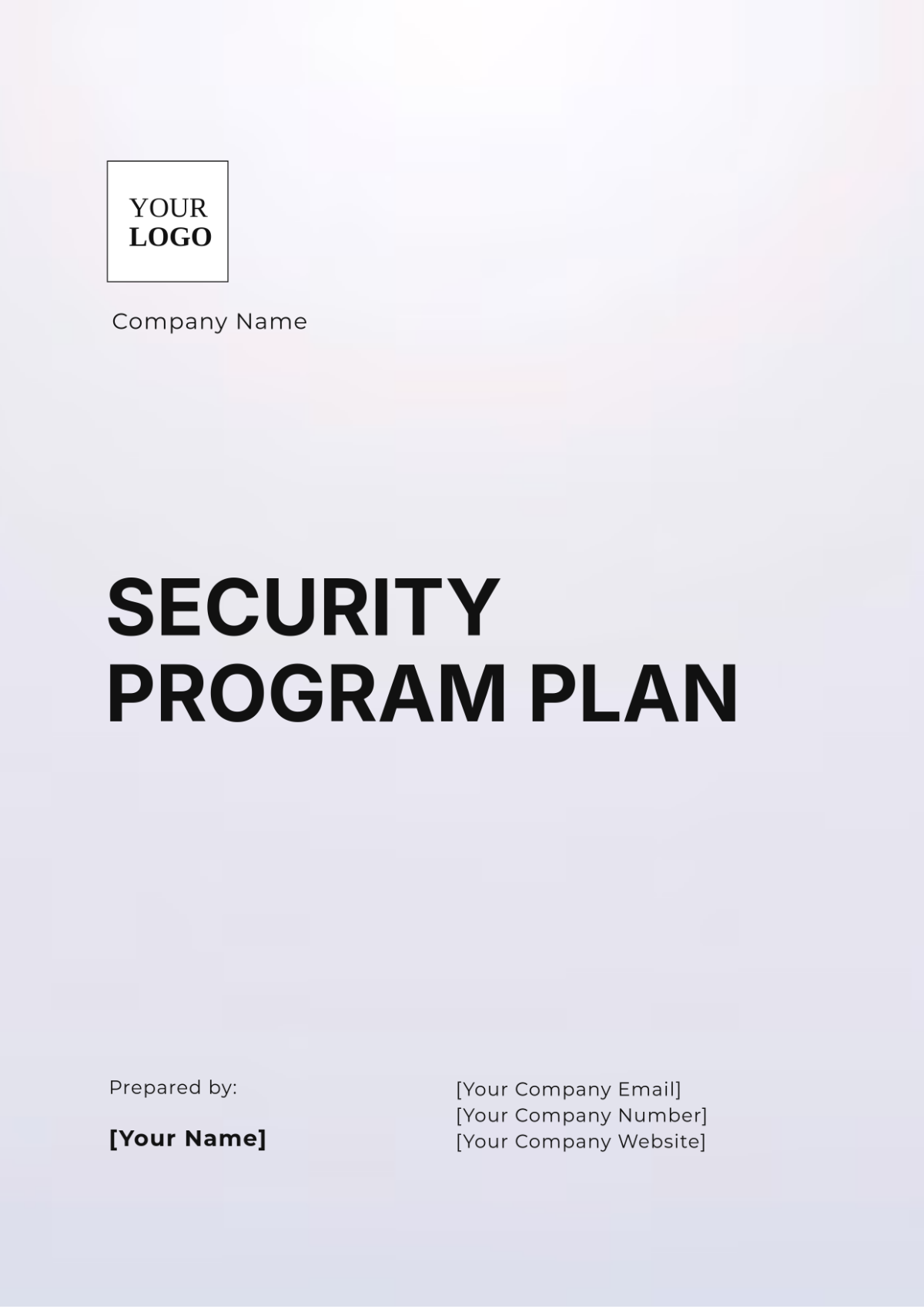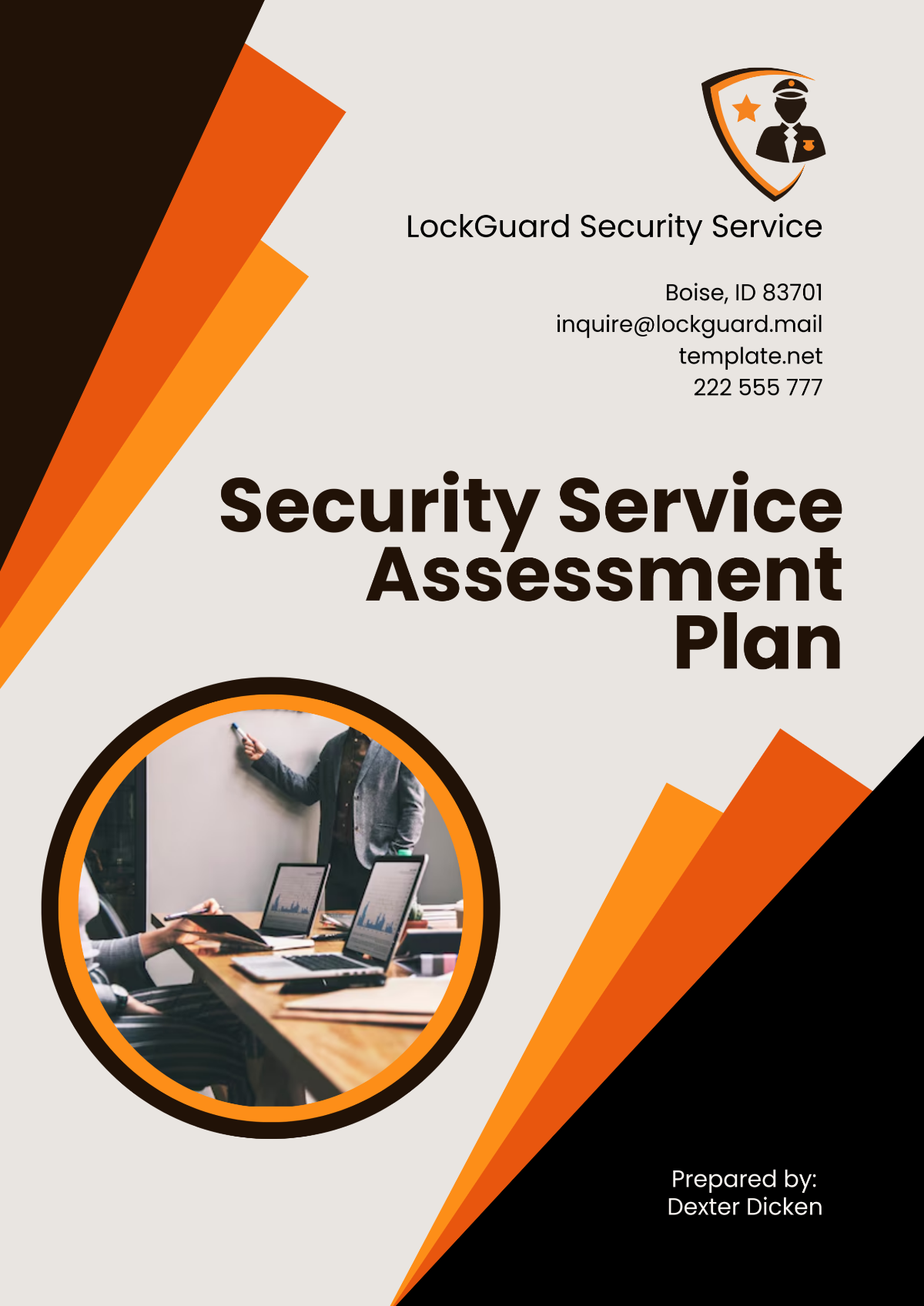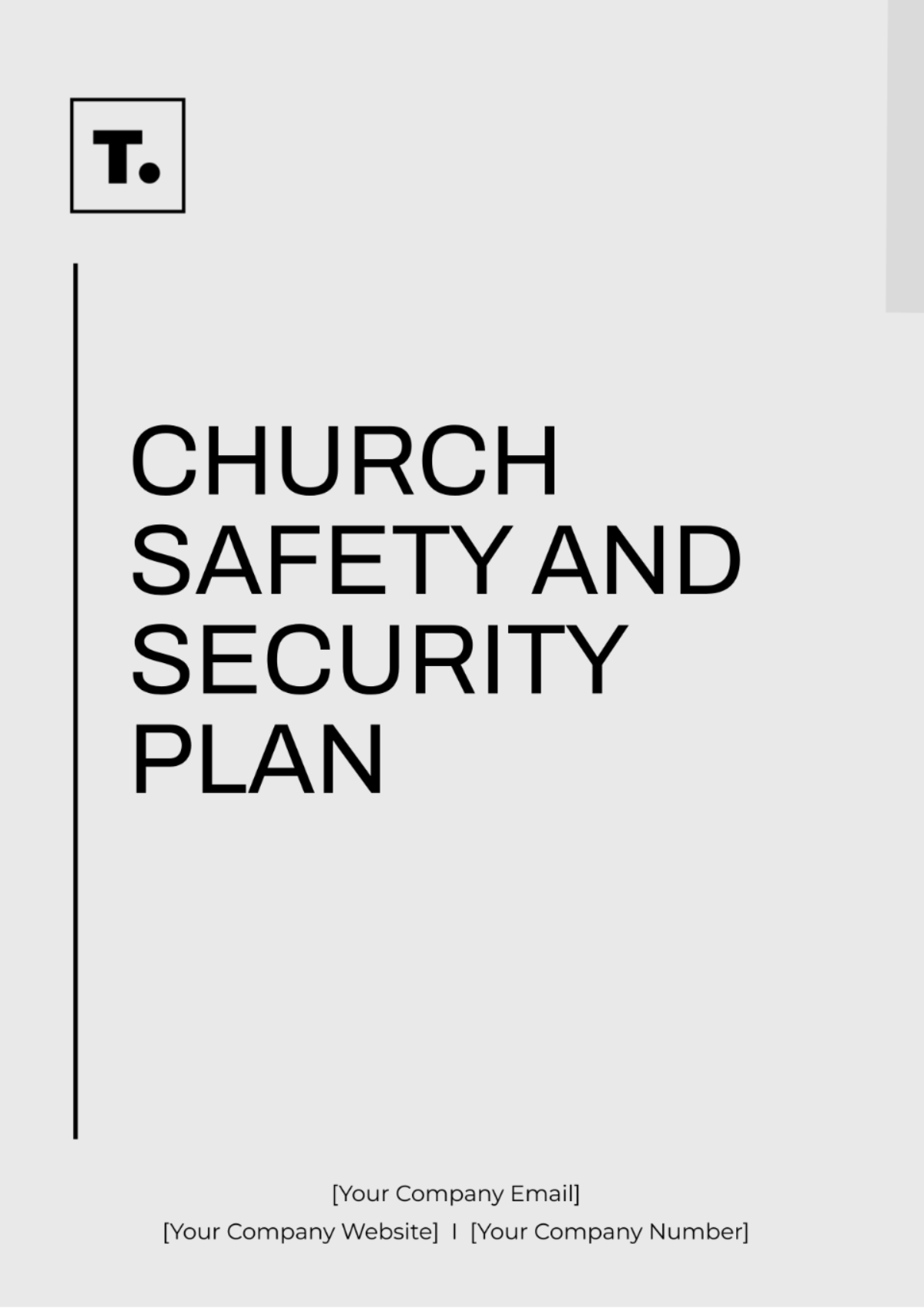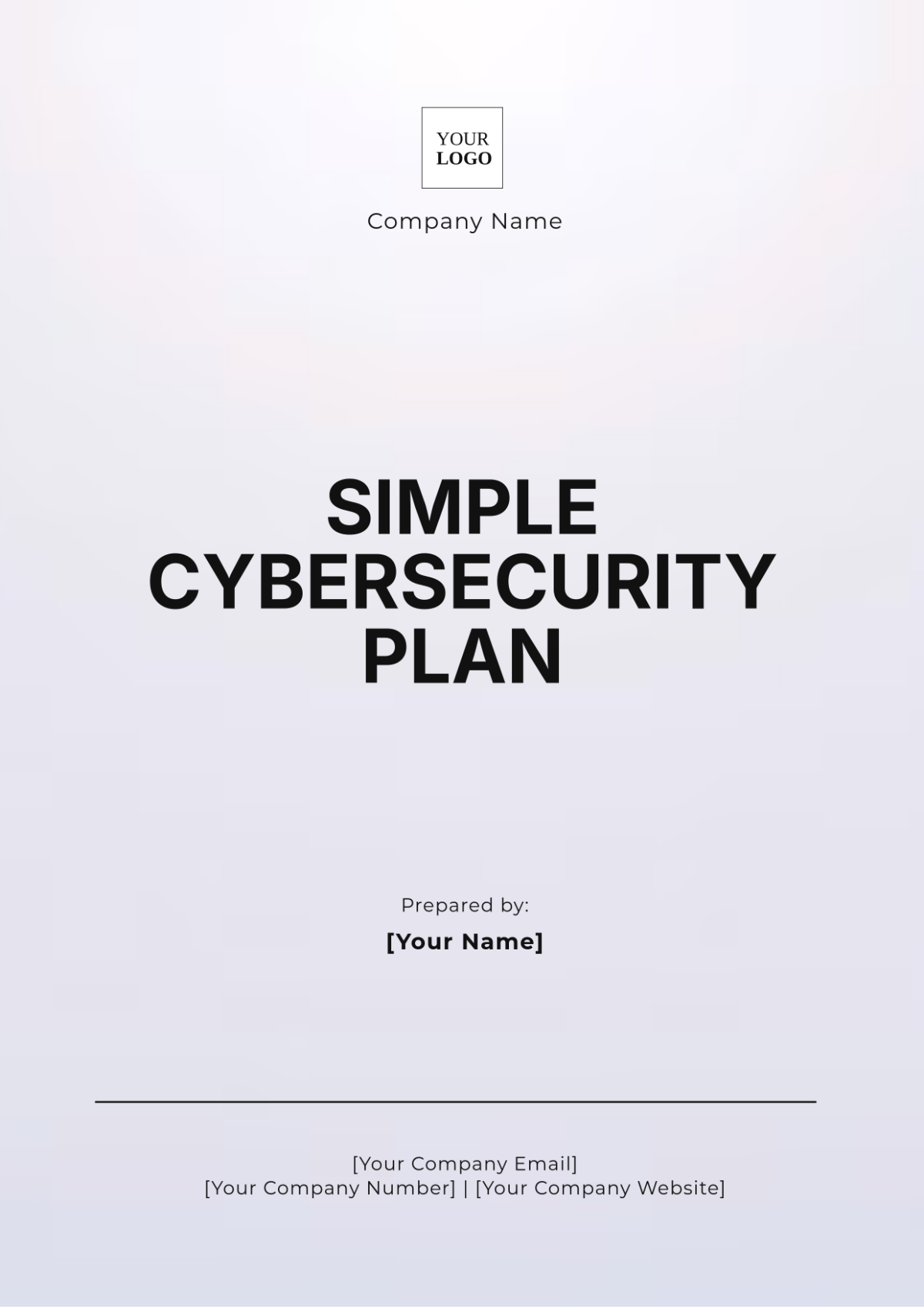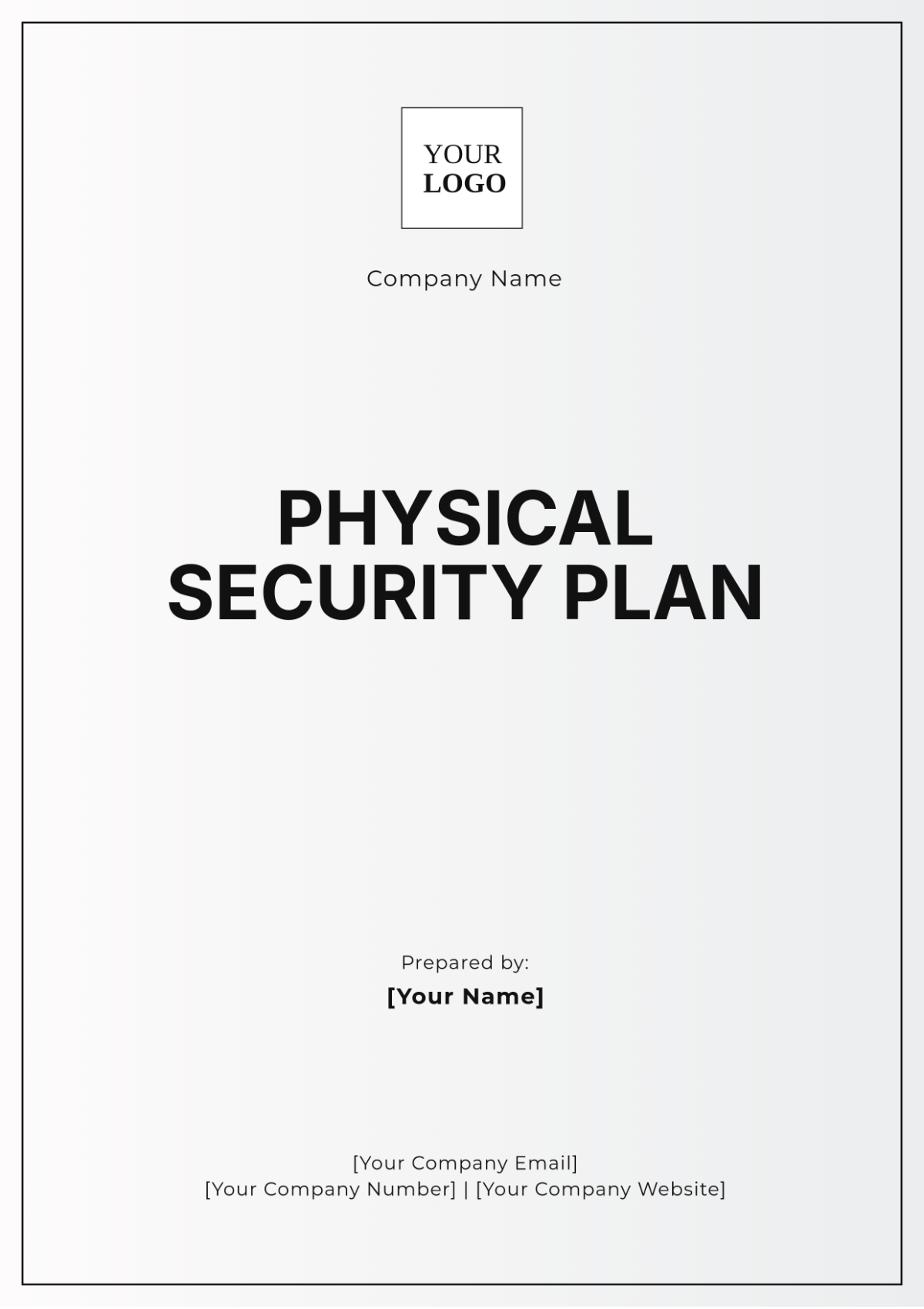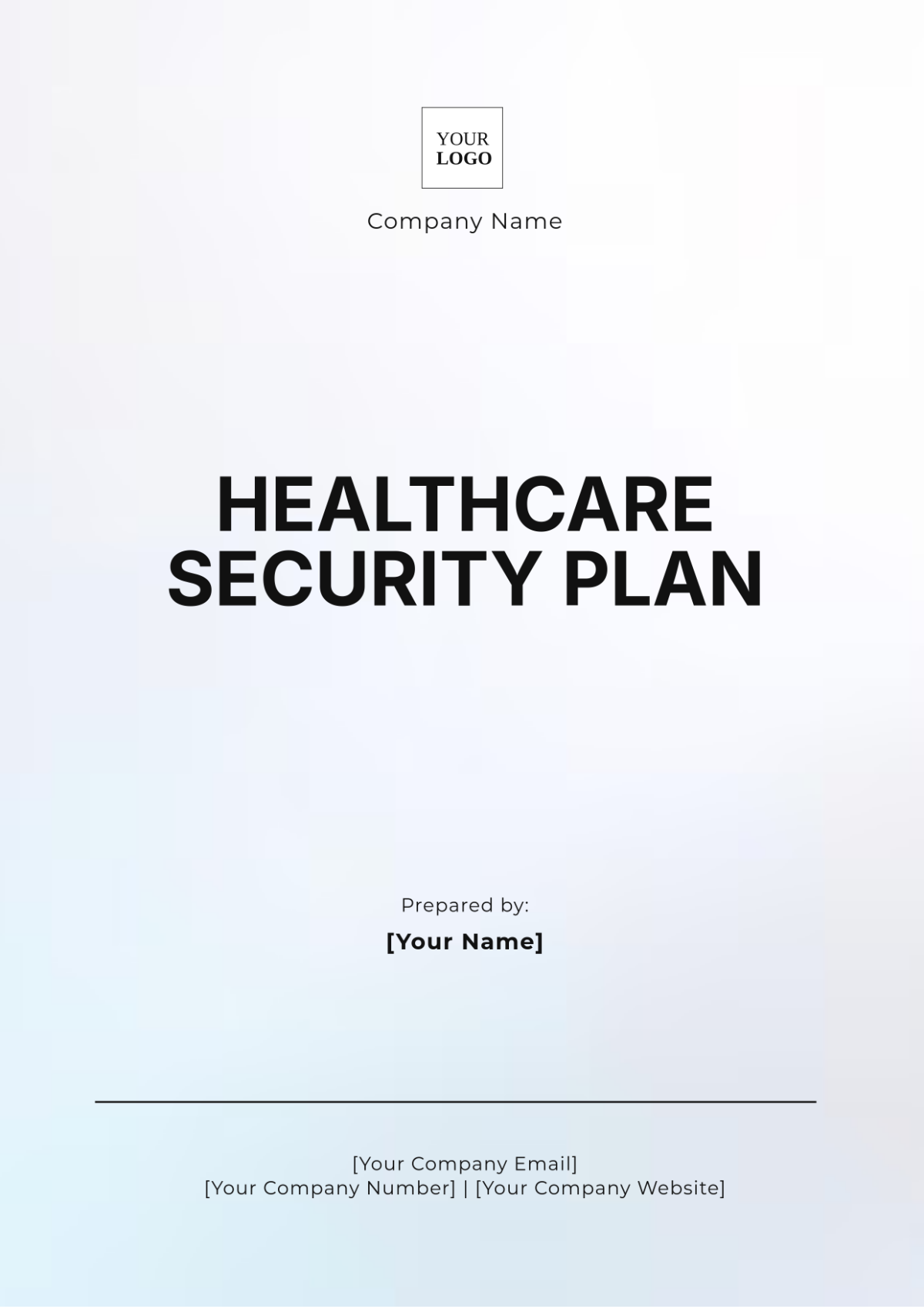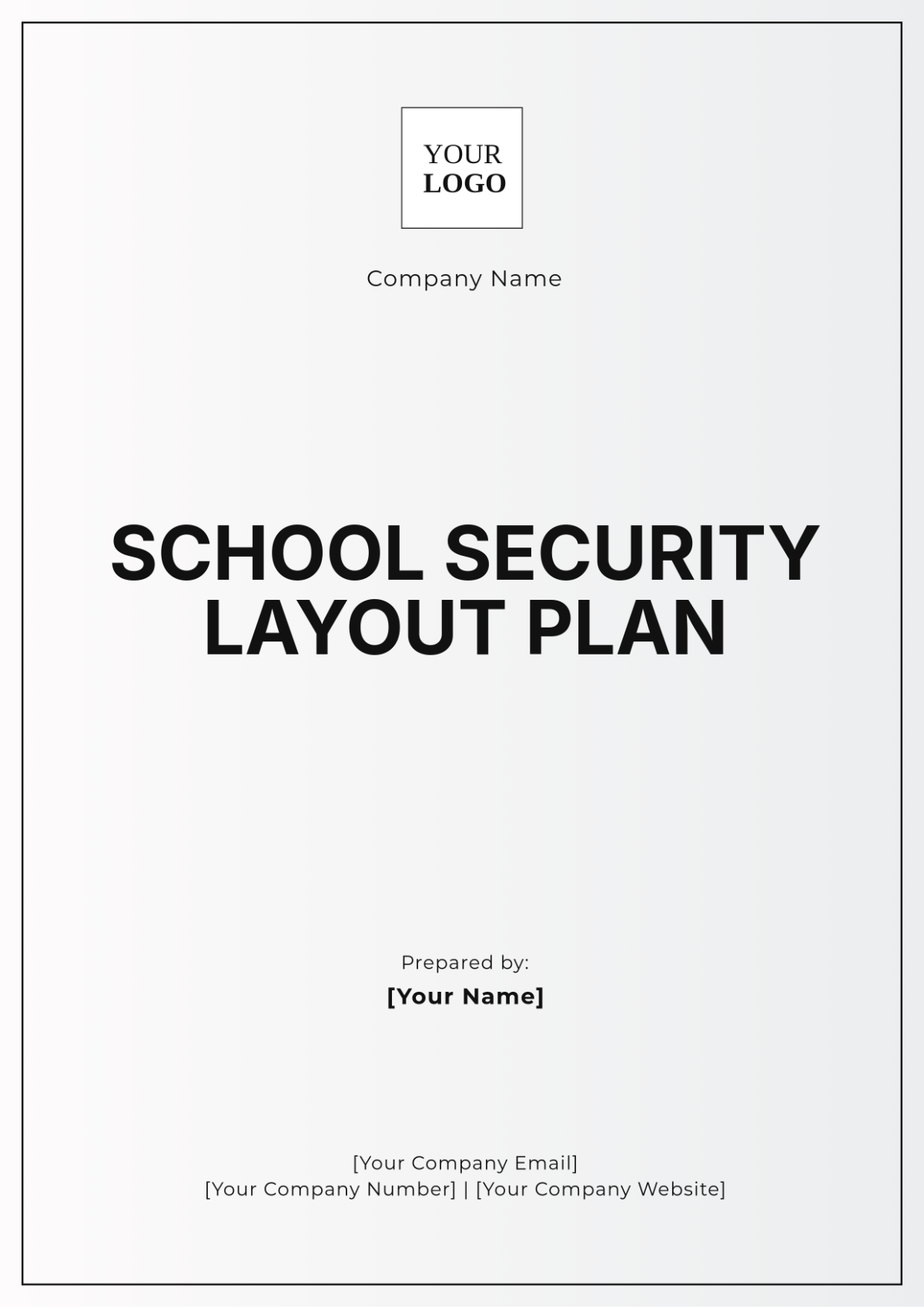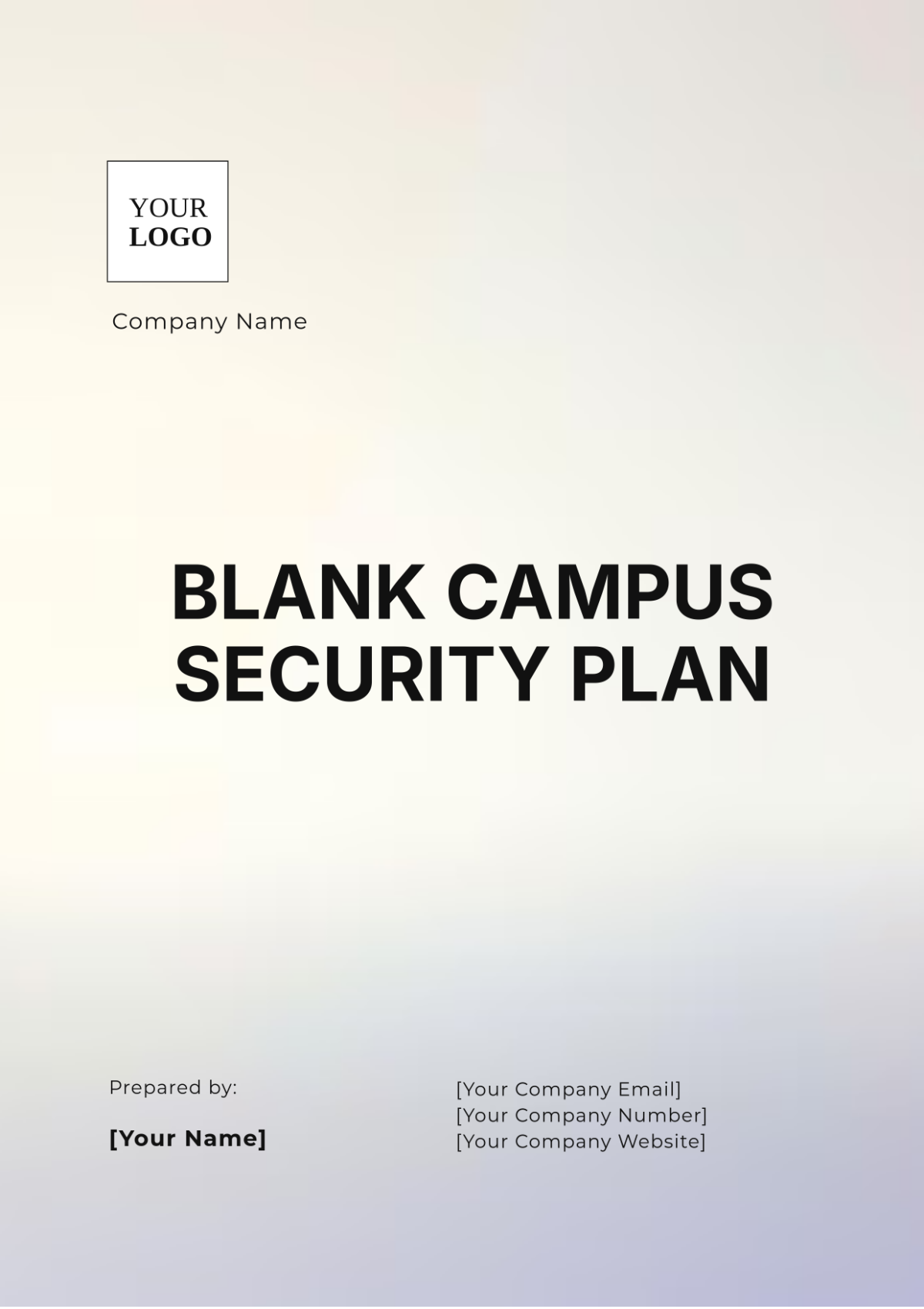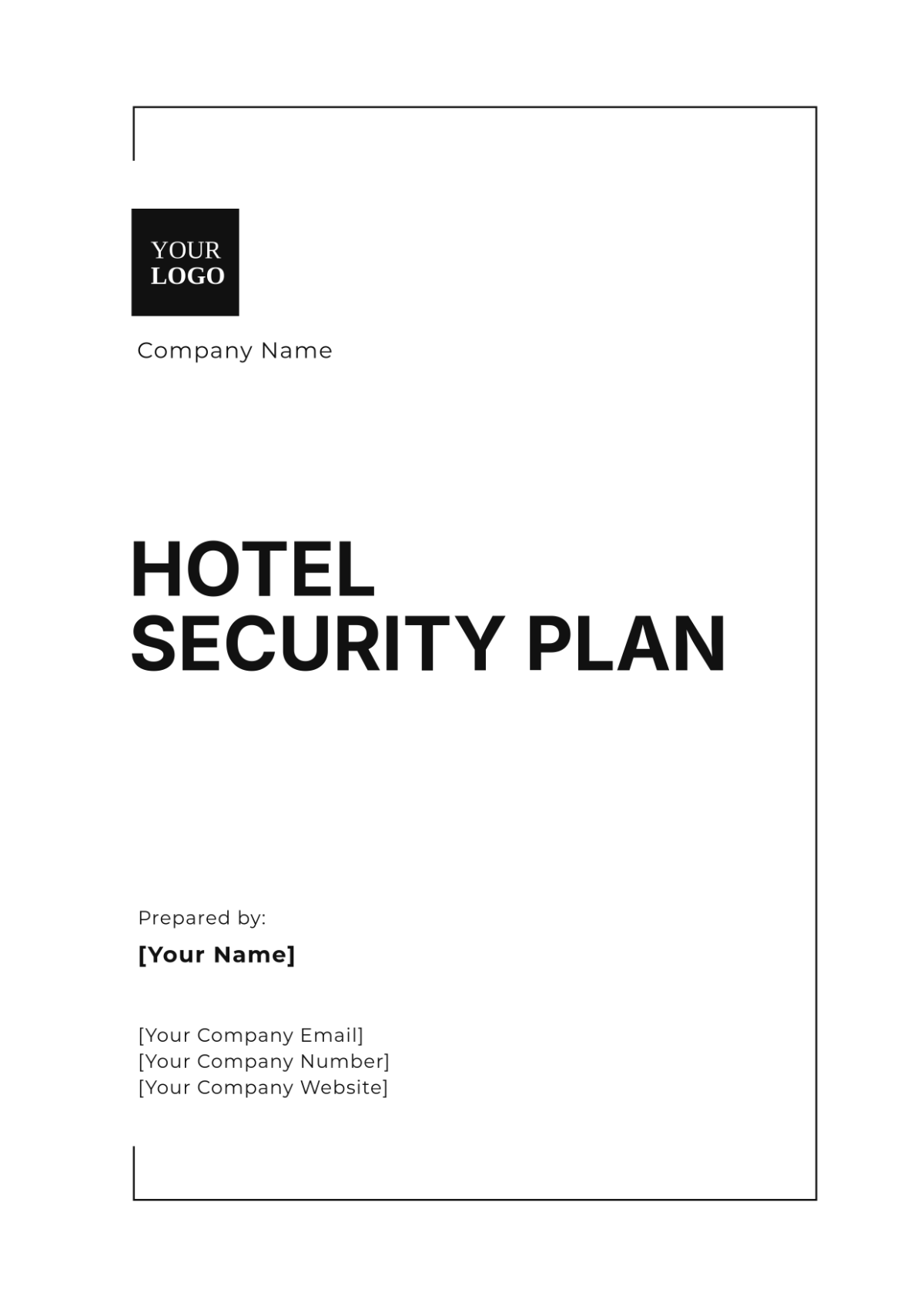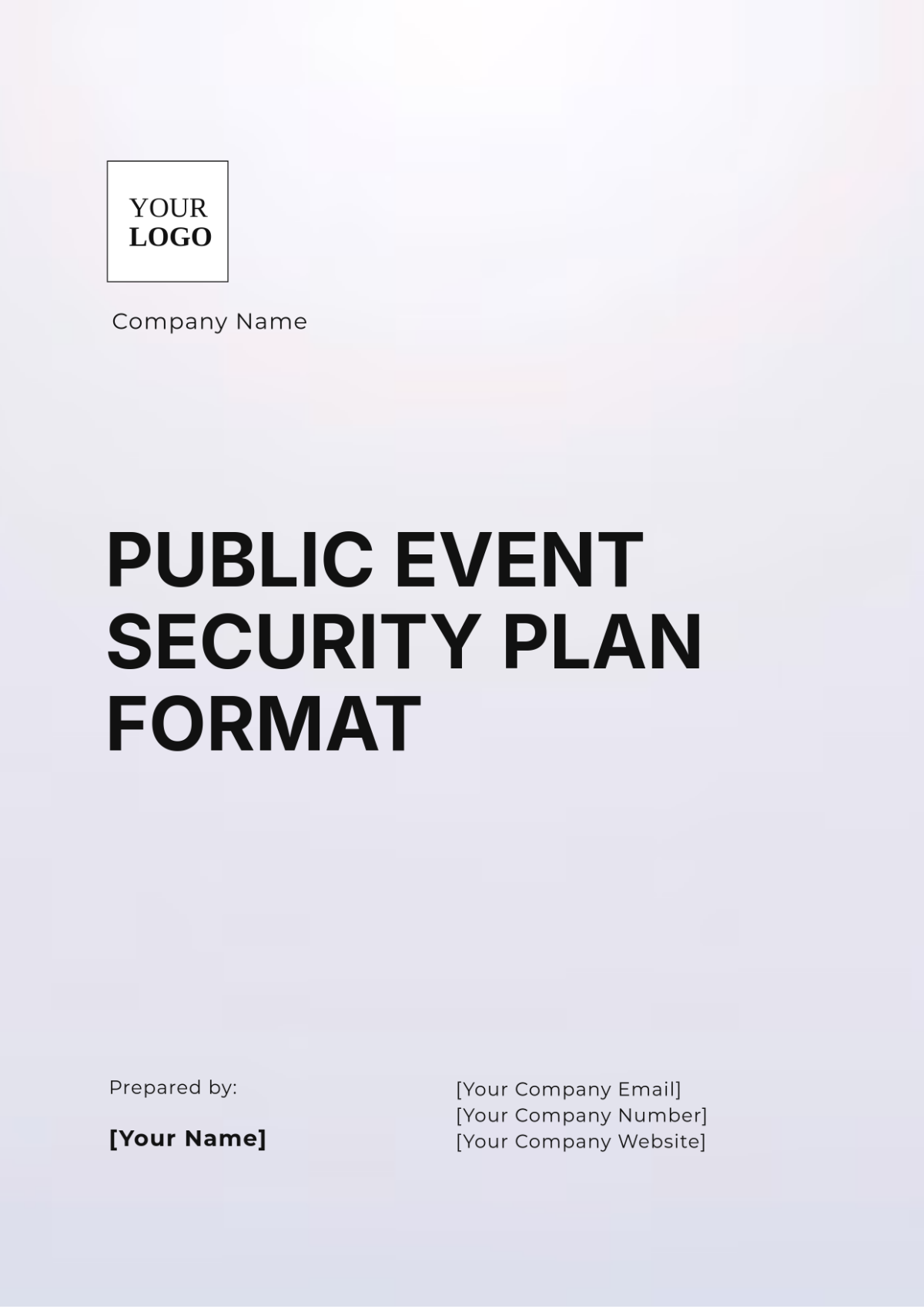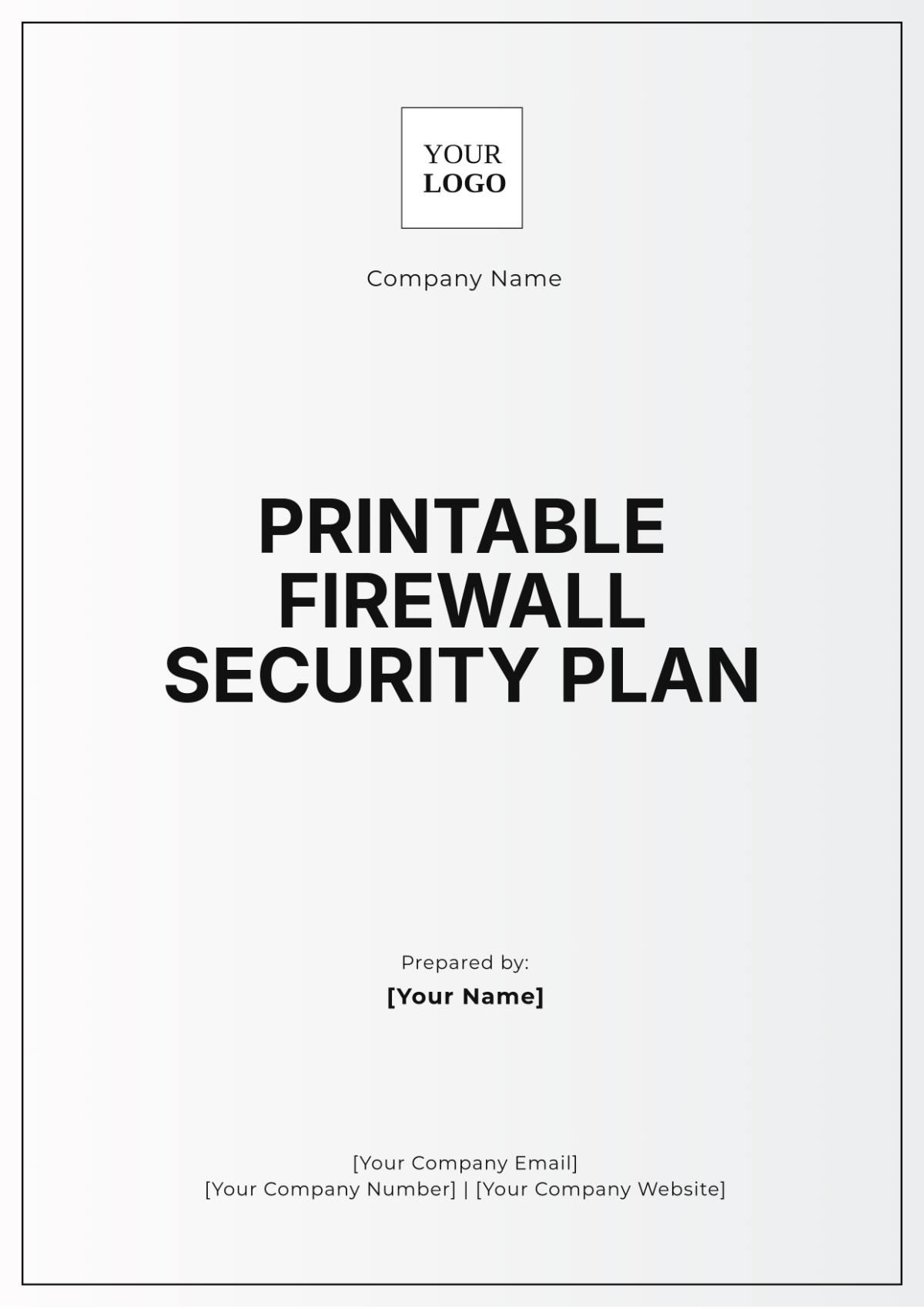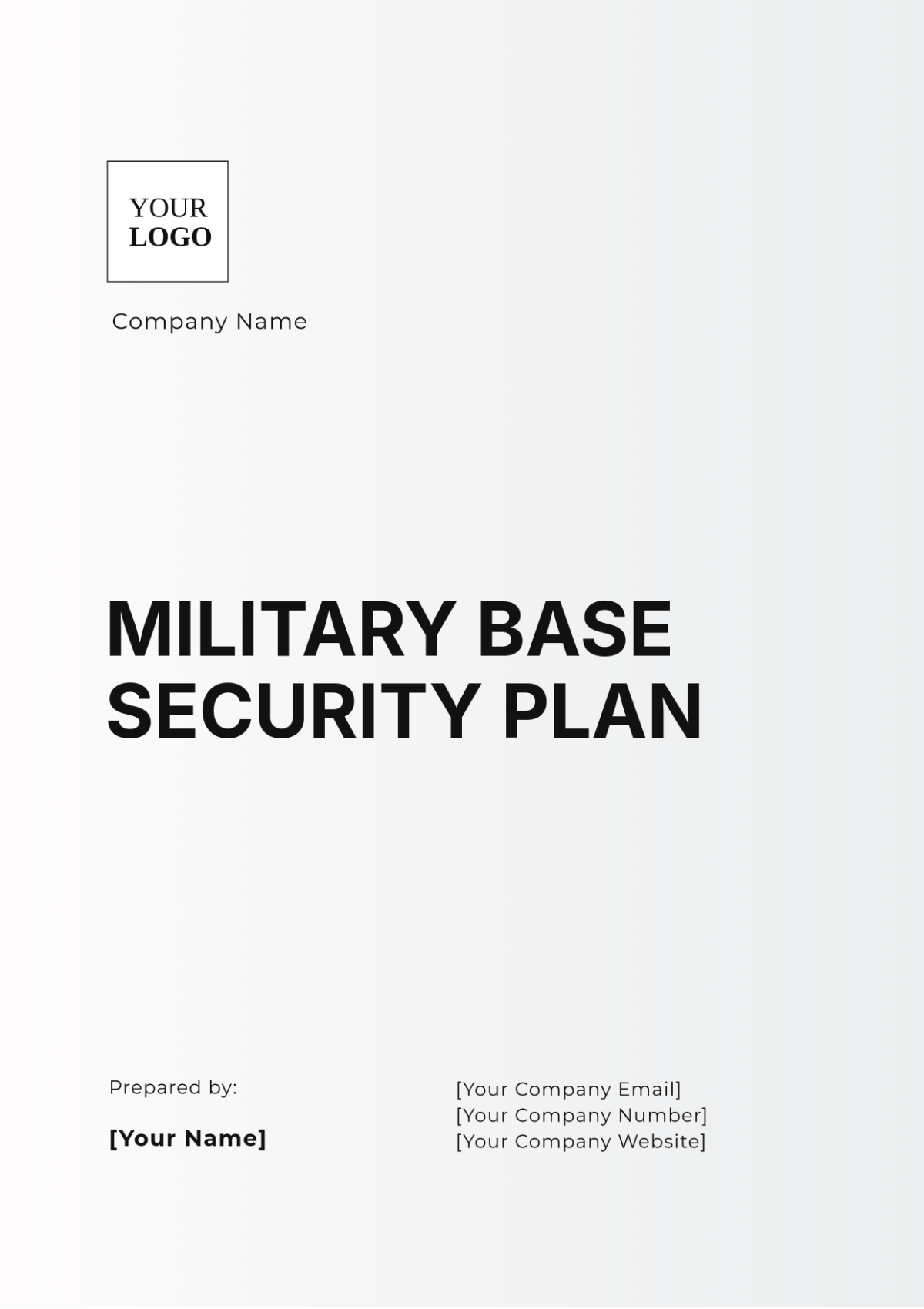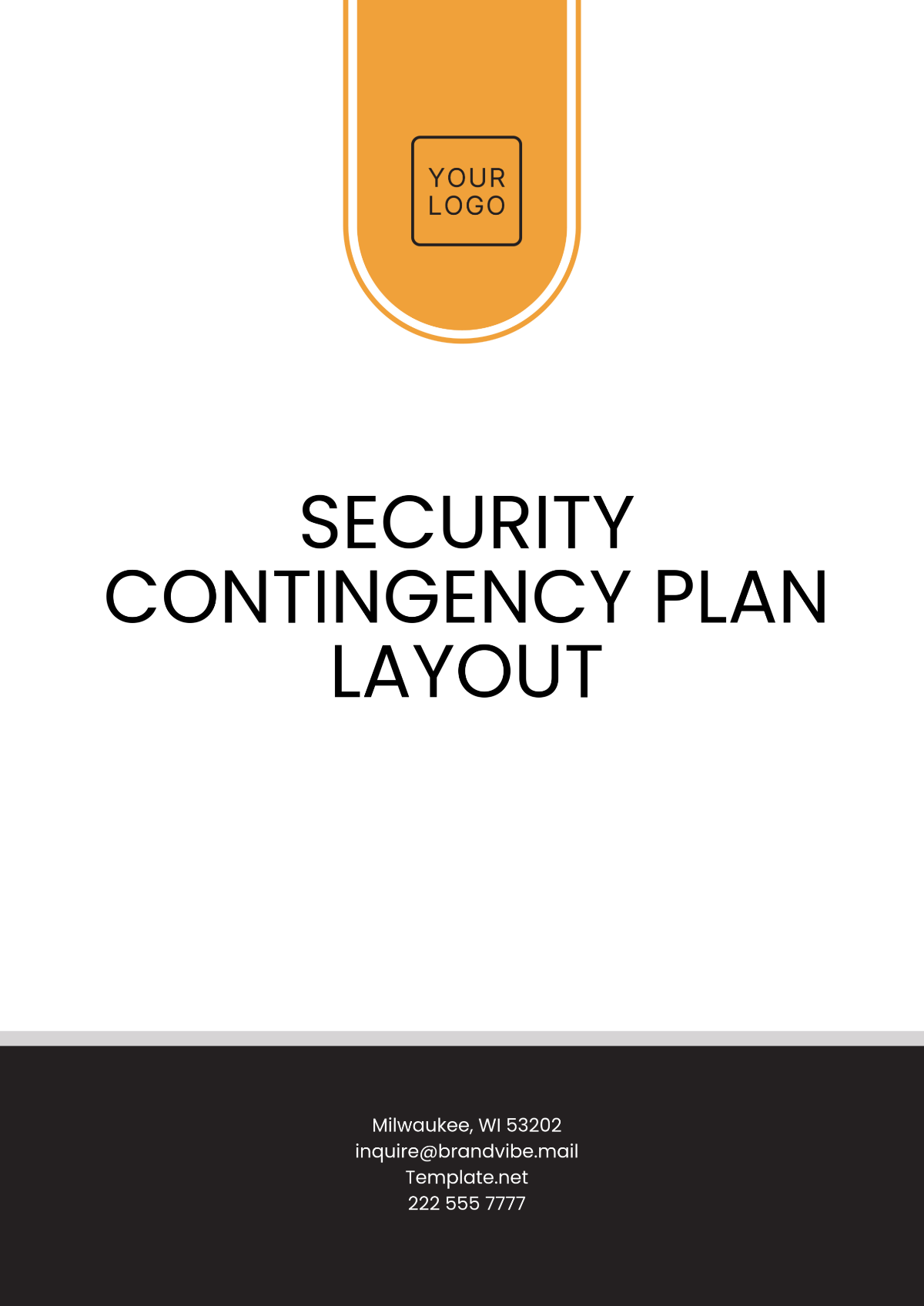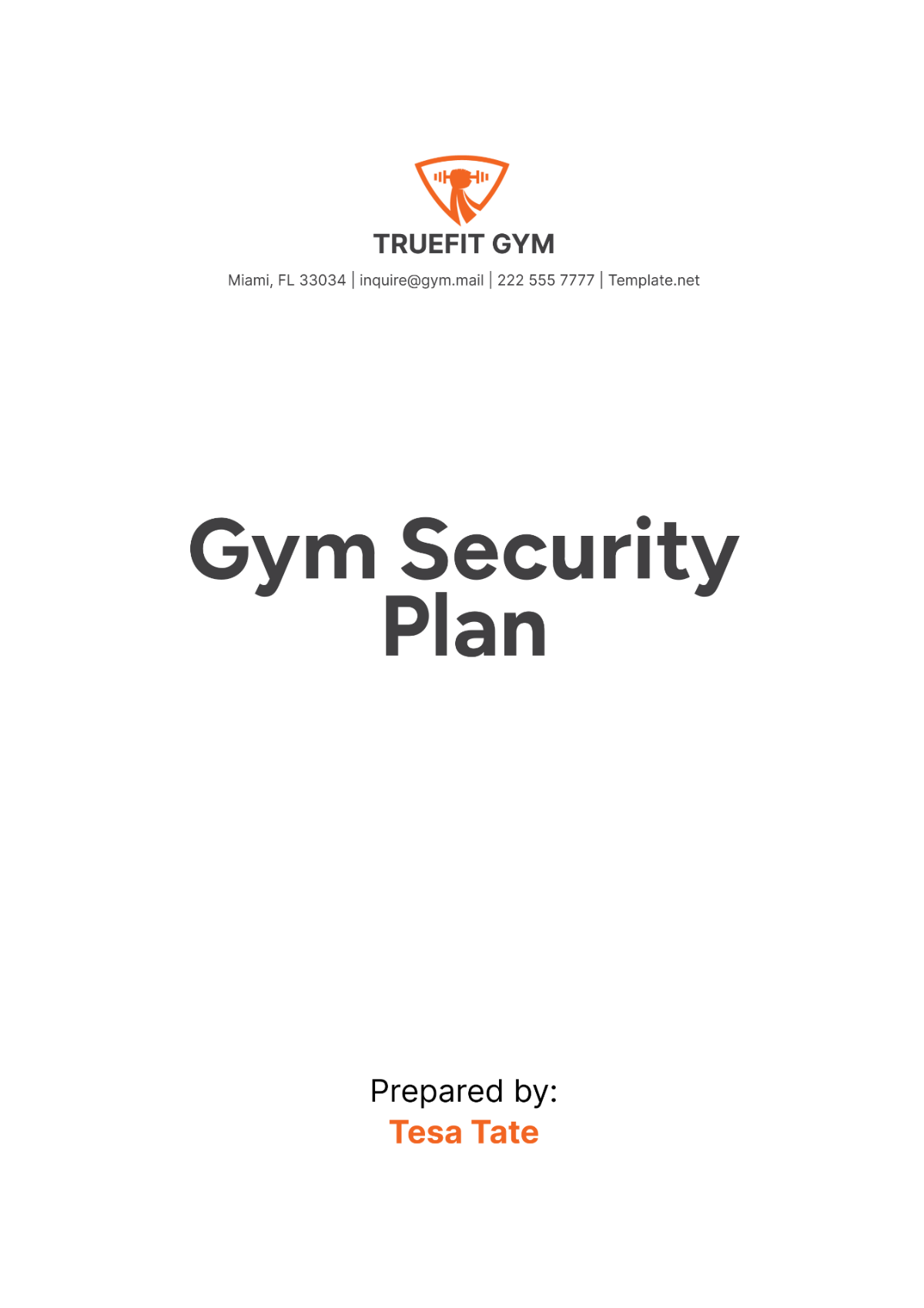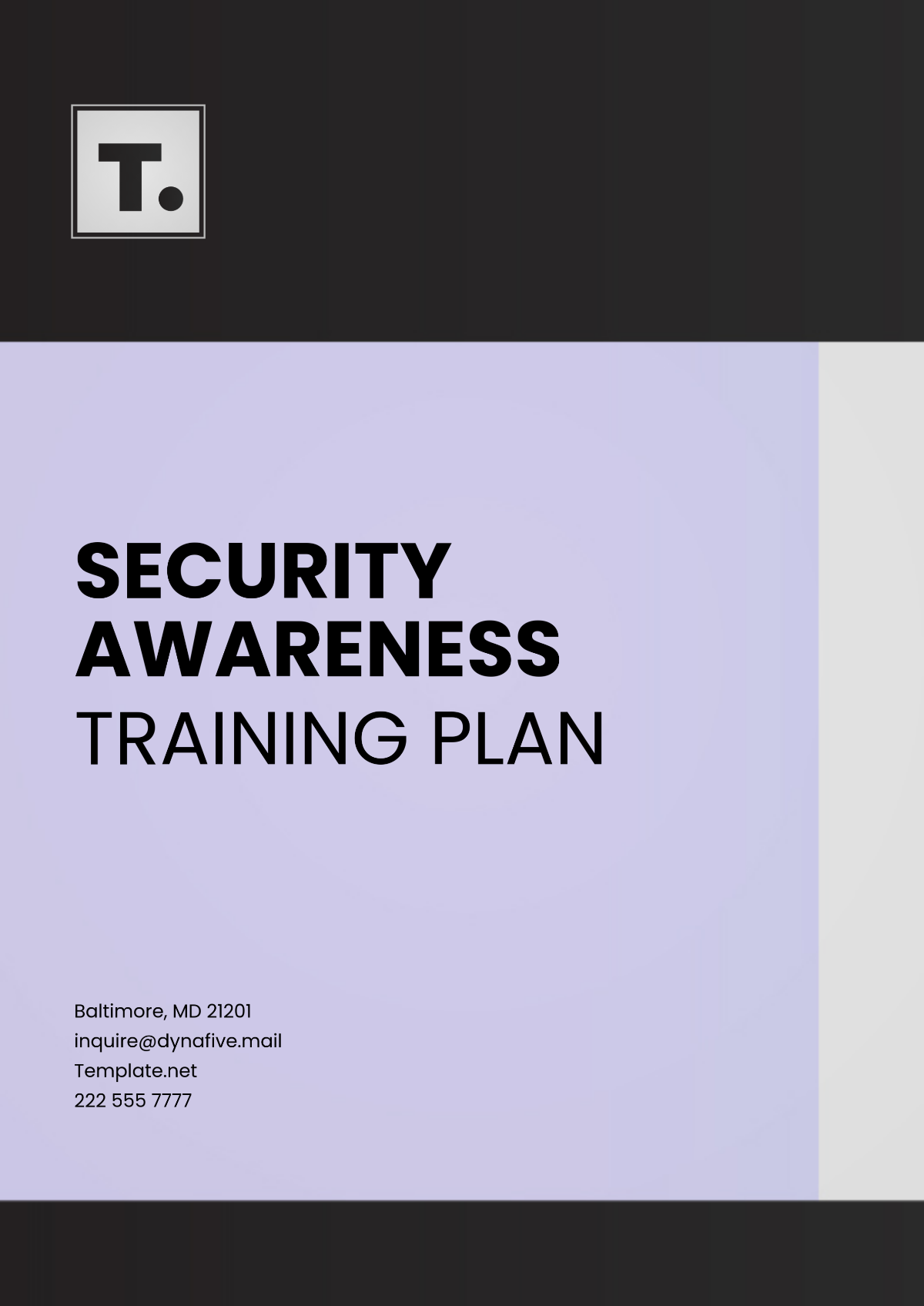Gym Security Plan
I. Executive Summary
This Security Plan for [Your Company Name] is designed to enhance the safety and security of all members, staff, and visitors. This comprehensive plan outlines the necessary protocols and procedures to mitigate risks and respond effectively to security incidents. By implementing these measures, [Your Company Name] will be able to provide a secure environment that fosters peace of mind and a positive gym experience.
The plan addresses various aspects of security, including physical security measures, access control, surveillance, staff training, and member education. It provides detailed strategies and actionable steps to strengthen the overall security posture of the gym. The objective is to prevent potential security breaches and ensure a prompt and coordinated response in case of any incidents.
This plan elaborates on the specific security measures and practices to be adopted. By adhering to this plan, [Your Company Name] will create a safer environment that enhances the overall experience for everyone involved. Continuous evaluation and improvement of these measures will support the gym’s commitment to security excellence.
II. Physical Security Measures
A. Security Infrastructure
Perimeter Fencing: Install sturdy perimeter fencing around the gym premises. This creates a physical barrier to deter unauthorized access and enhance overall security.
Lighting: Ensure adequate lighting in all areas, especially around entry and exit points. Proper lighting deters criminal activities and increases visibility for surveillance cameras.
Locking Mechanisms: Use high-quality locks for all doors and windows. Regularly inspect and maintain these locks to ensure they are functioning correctly and provide optimal security.
Emergency Exits: Clearly mark and secure all emergency exits. Regularly inspect these exits to ensure they are accessible and not obstructed.
Security Signage: Display security signage around the gym to inform members and visitors of surveillance and security measures. Signage acts as a deterrent and promotes a sense of security.
B. Entry and Exit Points
Main Entrance Security: Station security personnel at the main entrance to monitor and control access. Security personnel should check identification and ensure only authorized individuals enter the gym.
Member Check-In: Implement a member check-in system to track entry and exit times. This helps in monitoring member activities and ensuring only active members access the facilities.
Guest Registration: Require guests to register at the front desk and present identification. Guest registration helps in keeping track of visitors and enhances security.
Access Control Systems: Use electronic access control systems, such as keycards or biometric scanners, for secure entry. These systems restrict access to authorized individuals only.
III. Access Control
A. Member Access
The following table outlines the different access levels for members:
No. | Member Type | Access Level | Areas Accessible |
|---|---|---|---|
1 | Standard Members | Basic | General Workout Area |
2 | Premium Members | Intermediate | Workout Area, Sauna, Pool |
3 | VIP Members | Full | All Areas Including VIP Lounge |
Standard Members: Standard members have basic access, which includes the general workout area. This access level ensures that only authorized members can use the workout facilities, reducing overcrowding and potential security risks.
Premium Members: Premium members have intermediate access, which includes the workout area, sauna, and pool. This level provides additional privileges while maintaining security by restricting access to certain areas.
VIP Members: VIP members have full access to all areas, including the VIP lounge. This highest level of access offers exclusive benefits while ensuring that only VIP members can enter restricted zones.
B. Staff Access
Administrative Staff: Provide administrative staff with access to office areas and storage rooms. This access level ensures that administrative tasks are carried out efficiently while maintaining security.
Trainers and Instructors: Grant trainers and instructors access to workout areas, studios, and equipment rooms. This allows them to perform their duties effectively while ensuring the security of specialized areas.
Maintenance Staff: Allow maintenance staff access to utility rooms and maintenance areas. This access ensures timely repairs and maintenance while restricting access to critical areas.
Security Personnel: Provide security personnel with access to all areas for monitoring and emergency response. This access ensures they can effectively perform their duties and respond to incidents.
IV. Surveillance Systems
A. CCTV Installation
Camera Placement: Strategically place CCTV cameras in high-traffic areas, entrances, exits, and parking lots. Proper camera placement ensures comprehensive coverage and effective monitoring.
High-Resolution Cameras: Use high-resolution cameras to capture clear images and videos. High-quality footage is crucial for identifying individuals and incidents.
Remote Monitoring: Implement remote monitoring capabilities for real-time surveillance. Remote access allows security personnel to monitor the premises from anywhere, enhancing responsiveness.
Storage and Retention: Ensure adequate storage for recorded footage and establish retention policies. Retaining footage for a specified period helps in investigations and evidence collection.
Regular Maintenance: Conduct regular maintenance and checks on CCTV systems to ensure they are functioning correctly. Well-maintained systems provide reliable surveillance and security.
B. Alarm Systems
Intrusion Alarms: Install intrusion alarms at entry points to detect unauthorized access. Alarms act as a deterrent and alert security personnel to potential breaches.
Panic Buttons: Provide panic buttons in strategic locations for staff and members to use in emergencies. Panic buttons allow immediate alerts and quick response during critical situations.
Fire Alarms: Ensure fire alarms are installed and regularly tested. Functional fire alarms are essential for early detection and response to fire emergencies.
Integration with Security Systems: Integrate alarm systems with CCTV and access control systems for a comprehensive security solution. Integrated systems enhance coordination and effectiveness of security measures.
V. Staff Training
A. Security Training Programs
Initial Training: Provide comprehensive security training for new staff members. Initial training covers all security protocols and procedures, ensuring staff are well-prepared from the start.
Ongoing Training: Conduct regular training sessions to keep staff updated on new security measures and best practices. Continuous training enhances staff knowledge and preparedness.
Emergency Response: Train staff on emergency response procedures, including evacuation and incident reporting. Proper training ensures quick and effective responses during emergencies.
Conflict Resolution: Equip staff with conflict resolution skills to handle disputes and incidents calmly. Effective conflict resolution reduces the risk of escalation and enhances safety.
B. Certification Requirements
Security Certification: Require security personnel to obtain relevant security certifications. Certified staff are better equipped to handle security duties and ensure a high level of professionalism.
First Aid Certification: Ensure all staff members are certified in first aid and CPR. Certified staff can provide immediate assistance in case of medical emergencies.
Fire Safety Training: Provide fire safety training for all staff members. Proper training ensures staff can respond effectively to fire emergencies and ensure member safety.
Ongoing Education: Encourage staff to participate in ongoing education and certification programs. Continuous learning keeps staff updated on industry standards and enhances overall security.
VI. Member Education
A. Security Awareness
Orientation Sessions: Conduct security orientation sessions for new members. These sessions educate members on security protocols and encourage them to be vigilant.
Security Workshops: Offer regular workshops on personal security and safety. Workshops provide valuable knowledge and promote a culture of security awareness among members.
Information Boards: Use information boards to display security tips and updates. Visible information keeps members informed and reinforces security practices.
Digital Communication: Utilize digital platforms, such as emails and mobile apps, to communicate security information. Digital communication ensures timely updates and reaches a wide audience.
B. Reporting Mechanisms
Incident Reporting: Establish a clear process for members to report security incidents. A transparent reporting mechanism encourages members to report issues promptly.
Anonymous Reporting: Provide an option for anonymous reporting of security concerns. Anonymous reporting allows members to share information without fear of repercussions.
Feedback Channels: Create feedback channels for members to suggest improvements in security measures. Member feedback helps in identifying areas for improvement and enhancing security.
Regular Surveys: Conduct regular surveys to assess member perceptions of security. Surveys provide valuable insights into member concerns and satisfaction with security measures.
VII. Risk Management
A. Risk Assessment
The following table outlines potential security risks and their mitigation strategies:
No. | Risk | Likelihood | Impact | Mitigation Strategy |
|---|---|---|---|---|
1 | Unauthorized Access | Medium | High | Access Control Systems |
2 | Theft | Medium | Medium | Surveillance and Lockers |
3 | Vandalism | Low | Medium | Security Patrols |
4 | Fire | Low | Very High | Fire Alarms and Drills |
5 | Member Disputes | Medium | Low | Conflict Resolution Training |
Unauthorized Access: Unauthorized access is a medium likelihood risk with high impact. Implementing robust access control systems, such as keycards and biometric scanners, helps prevent unauthorized individuals from entering the gym.
Theft: Theft has a medium likelihood and medium impact. Installing surveillance cameras and providing secure lockers for members can significantly reduce the risk of theft within the gym.
Vandalism: Vandalism is a low likelihood but medium impact risk. Regular security patrols and visible security measures deter potential vandals and protect gym property.
Fire: Fire is a low likelihood but very high impact risk. Installing fire alarms and conducting regular fire drills ensure early detection and effective response to fire emergencies.
Member Disputes: Member disputes have a medium likelihood and low impact. Providing conflict resolution training for staff helps manage disputes effectively and maintain a harmonious environment.
B. Emergency Preparedness
Emergency Plans: Develop comprehensive emergency plans for various scenarios, including fires, medical emergencies, and security breaches. Detailed plans ensure a coordinated and effective response during emergencies.
Emergency Contacts: Maintain an updated list of emergency contacts for staff and members. Quick access to emergency contacts facilitates prompt communication and response.
Evacuation Drills: Conduct regular evacuation drills to familiarize staff and members with evacuation procedures. Drills ensure everyone knows how to evacuate safely in case of an emergency.
First Aid Kits: Ensure first aid kits are available in multiple locations within the gym. Easily accessible first aid supplies enable quick medical assistance during emergencies.
VIII. Monitoring and Evaluation
A. Regular Audits
Security Audits: Conduct regular security audits to assess compliance with security protocols. Audits help identify gaps and ensure continuous improvement in security measures.
Surveillance Reviews: Regularly review surveillance footage to monitor for any suspicious activities. Reviewing footage helps in identifying potential security breaches and taking corrective actions.
Access Control Reviews: Periodically review access control logs to ensure only authorized individuals are accessing restricted areas. Reviewing logs helps in detecting unauthorized access attempts.
Incident Reports: Analyze incident reports to identify trends and areas for improvement. Incident analysis provides insights into common security issues and helps in enhancing security measures.
B. Continuous Improvement
Policy Updates: Regularly review and update security policies to reflect best practices and regulatory changes. Keeping policies current ensures ongoing compliance and effectiveness.
Staff Training: Provide ongoing training for staff to keep them updated on new security protocols and practices. Continuous training enhances staff skills and knowledge.
Member Engagement: Engage members in security initiatives through education and feedback. Member involvement promotes a culture of security and responsibility.
Technology Integration: Integrate advanced technology to monitor and enhance security measures. Technology solutions can streamline security processes and improve effectiveness.
IX. Conclusion and Next Steps
A. Conclusion
This Security Plan for [Your Company Name] provides a comprehensive framework to enhance the safety and security of all members, staff, and visitors. By implementing rigorous security protocols, conducting regular training, and fostering a culture of security awareness, the gym can maintain a secure and welcoming environment. Continuous evaluation and improvement of these measures will support the gym’s commitment to excellence and member satisfaction.
Maintaining high security standards is essential for the gym’s success and reputation. By taking the necessary steps to identify and address potential risks, robustly preparing for any possible emergencies, and cultivating an anticipatory and forward-thinking approach to security, [Your Company Name] is well-equipped to offer a fitness experience that is not only safe but also immensely enjoyable for everyone involved.
B. Next Steps
The next steps to ensure the effective implementation of the Security Plan are as follows:
Security Plan Communication: Distribute the security plan to each staff ensuring that they thoroughly understand their individual roles and responsibilities outlined within the plan.
Emergency Contact Updates: Compile a comprehensive list of emergency contacts, ensuring that it is up-to-date, and then proceed to distribute this updated list to all staff as well as all key personnel.
Equipment Maintenance: Establish a routine timetable for conducting thorough maintenance inspections of all security devices and apparatus. This proactive measure is aimed at verifying that each piece of equipment is operating in optimal condition.
Member Orientation: Implement a comprehensive security orientation program specifically designed for new members. This program aims to provide them with a thorough understanding and familiarity with the gym's safety and security procedures and protocols.
Feedback Mechanism: Develop and implement a comprehensive system that allows both staff and members to report any security concerns they encounter. Additionally, create a structured process for these individuals to suggest potential improvements to enhance overall security measures.
Incident Reporting System: Develop an incident reporting system that facilitates the prompt and thorough documentation and response to any security-related issues that may arise. This system should be designed to ensure that all incidents are recorded in a timely manner and appropriate measures are taken swiftly to address and mitigate any potential threats or vulnerabilities to security.
By following these steps, [Your Company Name] can ensure the successful implementation and ongoing effectiveness of the plan.
